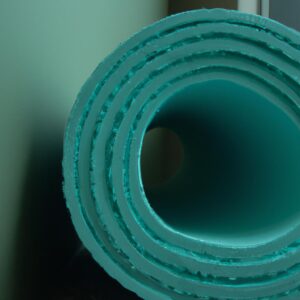Unlock Creative Healing: Art Therapy & Expressive Arts”

Introduction: Overview of Art Therapy
Art therapy is a form of therapy that utilizes creative outlets such as drawing, painting, and sculpting to treat psychological and emotional issues. It is an approach that combines art making and psychotherapeutic techniques to enhance the overall wellbeing of an individual. The practice of art therapy allows people to express themselves in a safe, non-threatening environment, allowing them to gain insight into their own emotions and behaviors. This form of therapy can help individuals improve their self-esteem, manage difficult feelings, and build better relationships with others.
Art therapy is a holistic approach to mental health care, rooted in both psychology and the creative process. Therapists aim to use the creative process of art making to explore a person’s cultural identity, physical abilities, and internal psychological state. Through the creative process, individuals engage in self-expression, self-reflection, and problem-solving. When people feel heard and understood through these creative processes, they can reach a higher level of emotional well-being.
Art therapists are typically Master’s-level professionals trained in both the creative arts and psychotherapy theory. They often use art materials, such as paints, clay, and paper, to help people work through a variety of issues. Art therapists use a variety of creative approaches, including drawing, painting, collage, or sculpture to address mental health and emotional challenges.
History of Art Therapy
Art therapy has been used as a therapeutic modality for thousands of years. In fact, cave paintings from as early as 40,000 BC are thought to be evidence of the use of art in healing rituals and ceremonies. Likewise, ancient civilizations like the Egyptians, Greeks, and Romans all had various forms of art associated with their spiritual and healing practices.
In the modern-day, the concept of art therapy was first introduced in the 1940s by a fellow named Deanne L. Akin. She believed that art could be used as a means of helping people express how they were feeling and process difficult emotions. Her work inspired the formation of the American Art Therapy Association (AATA) in 1969.
Since then, art therapy has become an accepted form of psychotherapy, used widely for individuals looking to explore their emotions and feelings through visual mediums. It is commonly used to treat a range of issues such as depression, anxiety, trauma, grief, substance abuse, and relationship problems.
Benefits of Art Therapy
Art therapy is a powerful intervention with profound healing benefits for individuals of all ages. It is the therapeutic use of art making and creative expression as a form of psychotherapy. This therapeutic practice helps individuals to explore their emotions, increase awareness of themselves and their relationships, and promote personal growth and healing.
Using creative visual expression through art can help to improve mental health, aid in self-discovery and foster psychological growth. Research has shown art therapy to be an effective tool in addressing mental health issues such as depression and anxiety. It also has been proven to be beneficial for individuals struggling with addiction, trauma, and relationship issues.
Art therapy can offer relief from distress and provide a sense of greater self-awareness by allowing clients to express themselves in symbolic terms. Drawing, painting, sculpting, and other forms of art expression enable clients to develop insight into their inner feelings and gain a better understanding of how they relate to others. Through developing a meaningful relationship with artwork, clients can gain insight into their individual strengths, identify and address areas of difficulty, and work towards finding constructive solutions to life’s challenges.
For those with physical ailments, art therapy can be used to manage the pain of chronic illnesses or the side effects of medications. Creative expression can also be used to build strength, improve mobility, and enhance communication. It has been shown to be helpful for people who are recovering from stroke, and even for those who struggle with speech impairments.
Finally, art therapy can serve as an emotional outlet for individuals who may have difficulty verbalizing their complex feelings and experiences. The creative process can be used to find more adaptive ways of living and can assist clients in discovering their true and authentic selves.
The Goals of Art Therapy
Art therapy is a powerful form of therapy that focuses on using creative processes to help people identify and express their emotions. It can be used to treat physical, mental, and emotional issues. The goal of art therapy is to bring about healing and encourage personal growth. By enabling a person to explore their innermost feelings and perceptions, it can help them gain a better understanding of themselves and their relationship to the world around them.
Some of the specific goals of art therapy include reducing stress, increasing self-awareness, improving communication, and developing problem-solving skills. For some, art therapy is also used to reduce anxiety or depression, help manage trauma, and increase confidence. In addition, art therapy can also teach basic art techniques and provide an outlet for creative expression.
Art therapists typically work with individuals or groups, depending on the patient’s needs. Within the therapeutic context, they lead guided exploration and discussion centered around the artwork created. Through this facilitated dialogue, the therapist helps the patient understand how he or she experiences emotions, and how those emotions manifest themselves in artwork. This allows the patient to gain insight into his or her own thoughts and behaviors.
The ultimate goal of art therapy is to provide a safe space for the patient to process emotions and learn more about themselves. Through art therapy, the patient can connect with their creativity, practice new skills, and gain insight into how they interact with the world. On a deeper level, art therapy helps individuals develop emotionally, intellectually, and spiritually.
Types of Art Therapy
Art therapy is an area of practice that uses creative art-making to promote emotional growth and healing. There are various techniques that are used depending on the needs of the client. Some of these techniques include visual art, music, movement, drama, writing, poetry, and photography.
Visual art activities involve using materials such as paints, colored pencils, clay, and other art supplies to create images. Music therapy involves both creating and listening to music to help express and process emotions. Movement therapy activities often involve body awareness and physical expression while still maintaining a safe space for the individual. Drama therapy is about exploring emotions in a creative and playful way by acting out scenes or role playing.
Writing activities involve exploring thoughts and feelings through journaling, storytelling, and creating poetry. Photography is another form of creative expression for art therapy in which clients take pictures to capture a moment in time or create a story. In any type of art therapy, the artwork produced is used as a tool to explore thoughts, feelings, and behavior and rise to the surface.
Examples of Art Therapy Techniques
Art therapy techniques can range from drawing, painting, and sculpting, to music, dance, poetry or drama. These different methods allow individuals to express and explore their emotions, feelings, wants and needs, while engaging in creative problem solving.
One art therapy technique is mandala drawing, where the person draws a circular design. Within this process, the client will gain insight into their inner self by interpreting the colors and symbols chosen to create the mandala. Additionally, this exercise allows the individual to relax and bring clarity to their thoughts.
Another technique, known as clay animation, utilizes sculpting in clay to create a three-dimensional story. This technique helps to give individuals the opportunity to guide their own stories with their artwork, which can be particularly beneficial for those with difficulty with verbal expression.
Art therapy can also use activities such as body mapping, where a person marks on paper their physical body, followed by drawing their emotional and spiritual experience within that particular time. This exercise provides insight into a person’s inner journey and offers a way to bridge understanding between body, mind, and spirit.
Still other art therapy methods include mask-making, collage-making, and a variety of expressive writing exercises. All of these techniques are designed to encourage creative expression, offer relief, and gain insight into one’s feelings and life experiences.
Therapeutic Setting and Patients
Art therapy is a form of psychotherapy that offers an opportunity for individuals of all ages to express themselves through art. Art therapists work with patients in multiple settings such as hospitals, rehabilitation centers, schools, government agencies, private practice, and more. The therapeutic setting and patient selection for art therapy can vary greatly based on the type of therapy used.
For example, someone in a hospital setting might receive art therapy as part of their treatment plan for physical rehabilitation or mental health issues. A school setting might involve art therapy as a way to support students’ emotional development and encourage creative problem solving skills. Other settings, such as a private practice, might use art therapy to work with people with anxiety, depression, or other challenges.
Art therapists use a variety of techniques to work with different types of patients. For instance, art therapists working with children may use activities such as drawing, painting, collaging, and puppetry, while those working with adults may employ techniques such as painting, sculpting, creative writing, and journaling.
Art therapists use their creativity and skills to identify and explore the patient’s thoughts, feelings, and experiences. They observe the patient’s responses to their artwork and offer feedback and guidance in order to help the patient make sense of their emotions and gain insight into their situation. It is important to note that art therapy is a collaborative process between the art therapist and the patient.
Preparing for Art Therapy Sessions
Art therapy sessions provide an opportunity to explore emotions and healing through creative expression. For this reason, it is important to ensure that the setting is relaxed, comfortable, and conducive to this type of exploration. There are also certain steps that should be taken prior to each session to ensure that the therapy is successful.
Before the start of each session, the therapist and the patient should discuss the purpose and goals of the session. This helps set expectations for both parties and allows for a more productive and meaningful session. It can also be beneficial to review previous works of art and discuss how they relate to the present session.
The therapist should also be familiar with the patient’s artistic background and any materials that he or she will need to bring for each session. This includes any special tools such as paintbrushes, paints, clay, and other art supplies. Additionally, the patient should know which type of art medium they will be using in the session so they can properly prepare.
The patient should also be informed of any possible risks that may be associated with certain types of art materials or activities. For instance, when working with certain chemicals, it is essential that the patient wear protective gear. The therapist should also advise the patient on any safety concerns or other topics they should be aware of before beginning the session.
Finally, the therapist and the patient should discuss the objectives of the session and the expected outcomes. This allows both parties to agree on what they hope to achieve and gives the therapist an opportunity to guide the patient’s creative process. With these steps completed, both the therapist and the patient can focus on exploring their emotional wellness and creativity through art therapy.
Understanding the Meaning of Art Work
When engaging in art therapy, it is important to take the time to understand the meaning of the art work. This will help both the therapist and the client to facilitate the therapy process. It is through understanding the meanings behind the artwork that the therapists can better identify unresolved issues and provide clients with the tools to help work through the difficulties.
There are many ways to interpret the artwork created by a client. The first method is to look at the formal aspects of the artwork, such as colour, form, texture, and composition. Clients may also include symbols or images that help give clues to the meaning of the art piece. They may also represent specific feelings, events, or memories.
The expressive qualities such as how a painting was painted can be analysed as well. If a painting was created in a chaotic manner, without any attention to detail, this might indicate a feeling of stress or confusion within the artist at the time. Similarly, if the painting is precise and composed, this may suggest feelings of control and order.
In conclusion, understanding the meaning behind art work is an important part of art therapy. Through exploring the formal, symbolic, and expressive qualities of the artwork, a therapist can better gain insight into the mental and emotional state of the client. This understanding will also help them to create strategies to address their difficulties.
Alternative Creative Forms Used In Art Therapy (300 words)
Art therapy is not limited to painting and drawing, there are many other forms of creative expression which can be used to explore emotions and gain insight into the therapeutic process. Music, writing, photography, sculpture, and movement can all be incorporated into art therapy as valid alternatives.
Music can be used to help patients express emotions or communicate feelings that may not be easily voiced. Writing can be a release for those who are struggling with difficult situations, or an outlet for imagination. Photography can be used to capture little moments in time that express emotional clarity. Sculpture can involve creating tactile three-dimensional images to help clarify feelings and provide connection to others. Movement is an active process of expression; this can include dancing, theater improvisation, yoga, or any other type of meaningful movement.
The use of these alternative creative forms can be just as powerful as traditional art therapy in helping patients explore and understand their emotions, improve communication and relationships, and bring about a sense of healing and self-awareness. Whether it is music, writing, photography, sculpture, or movement, creative expression can be a beneficial tool for those facing physical, mental, and emotional challenges.
Challenges of Art Therapy
As with any form of therapy, art therapy can come with its own set of challenges. Aside from the challenge of understanding the symbolic language of art and expressing inner feelings, there are other issues to consider. Some of these include:
- The cost of art materials which can be prohibitively expensive, depending on the type of artwork being created.
- Attending sessions can be difficult for people who are suffering from depression and anxiety.
- The pressure to produce art that is satisfactory to both the patient and therapist.
- The risk of confusing the therapeutic setting with a recreational one.
It is important to be aware of the potential challenges and work together with the therapist to ensure that the art therapy sessions are conducted in an appropriate way.
Conclusion
Art therapy and expressive arts can bring about healing and joy for those who engage in it. By using creative forms, such as drawing, painting, sculpture, music, dance and drama, patients have the opportunity to express emotions and ideas in a safe and therapeutic setting. This can help them to gain greater insight into their feelings, strengths and weaknesses, and from there work on resolving issues or managing stress better. With the help of a trained art therapist, anyone can experience the amazing benefits of utilizing art therapy and expressive arts.
comments: 0






